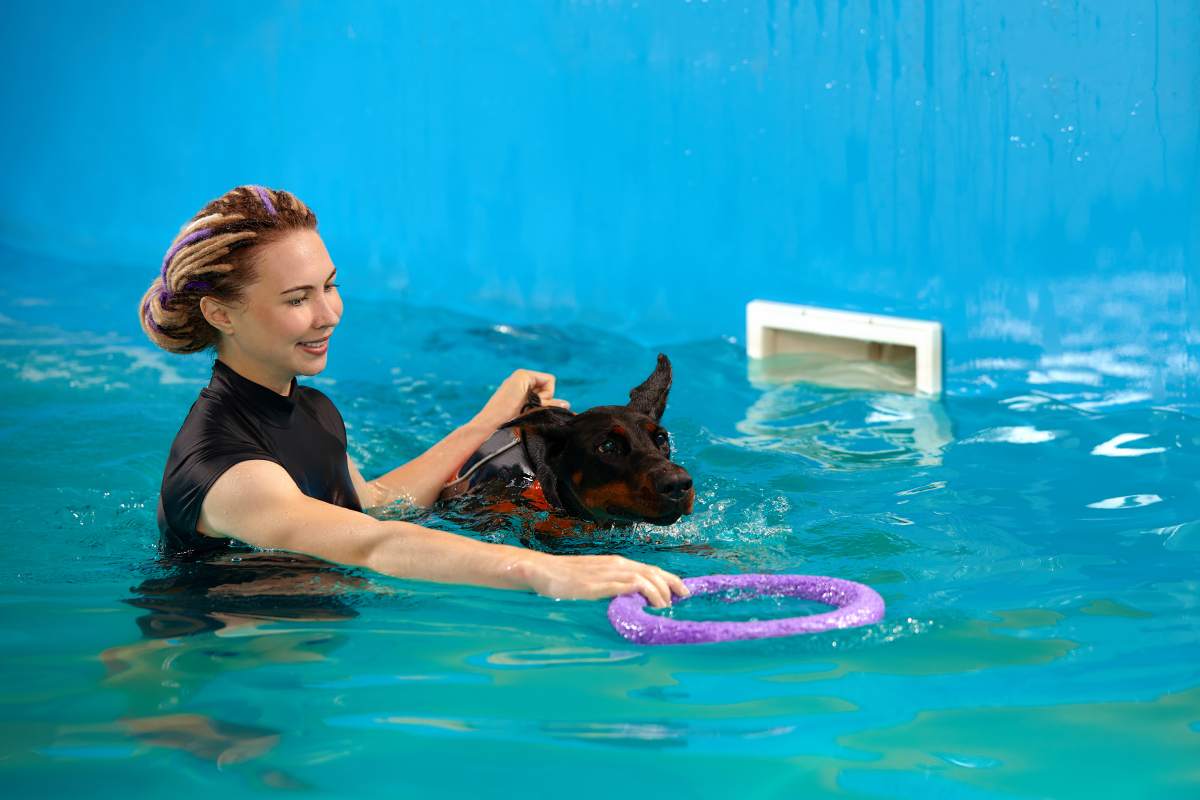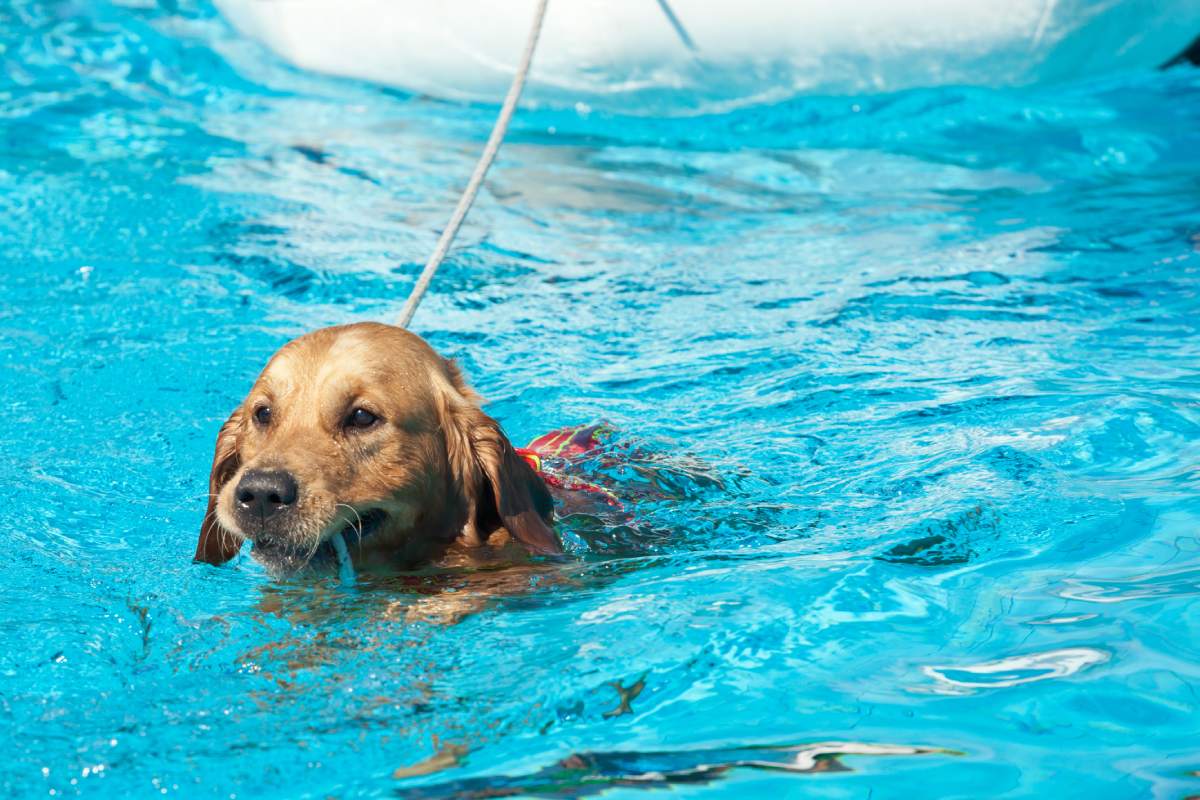Is it necessary to introduce your dog to the pool? How to introduce your dog to the pool? Read this and take your dog jump in the water today!
Hot weather is a great chance for you and your dog to cool off with a swim. Swimming is an excellent low-impact exercise for dogs, helping with circulation, weight control, and muscle relaxation. Plus, it’s a fun way to bond with your dog!
However, there are a few things to keep in mind. Not all dogs are natural swimmers, and some may struggle with swimming due to their body type. It’s crucial to teach your dog how to swim properly, introduce them to water gradually, and be cautious to avoid accidents like drownings or water poisoning.
Is it Necessary to Introduce Your Dog to the Pool?
Introducing your dog to the swimming pool can be a great idea if done correctly. Whether or not it’s necessary depends on your dog’s individual needs and personality. Here’s a simple guide to help you decide and ensure a positive experience for your furry friend.
Why Introduce Your Dog to the Pool?
- Safety: If your dog will be around pools often, getting them accustomed to it can help prevent accidents. Knowing how to safely enter and exit the pool is crucial.
- Exercise: Swimming is an excellent form of exercise for dogs. It’s gentle on their joints and provides a good workout, especially for dogs with arthritis or weight issues.
- Fun: Many dogs enjoy swimming and playing in water. It can be a fun activity that strengthens the bond between you and your pet.
When to Introduce Your Dog to the Pool
- Age and Health: Puppies and older dogs might need more time and patience. Ensure your dog is healthy enough for swimming. Consult with your vet if you’re unsure.
- Temperament: Some dogs naturally love water, while others might be nervous or scared. Gauge your dog’s comfort level and be prepared to go at their pace.

How to Introduce Your Dog to the Pool
- Start Slow: Begin with shallow water. Let your dog explore at their own pace. Use treats and praise to encourage positive behaviour.
- Use a Dog-Friendly Pool Ramp: For a safe entry and exit, a ramp or steps can help your dog get in and out of the pool without jumping or struggling.
- Safety Gear: Consider a dog life jacket if your dog is not a strong swimmer. It can provide added confidence and safety.
- Supervision: Always supervise your dog while they are in or near the pool. Even if they are good swimmers, accidents can happen.
- Dry Off: After swimming, make sure to dry your dog thoroughly to prevent them from getting cold. Pay special attention to their ears, as water can cause infections.
Tips for Pool Time
- Hydration: Make sure your dog has access to fresh water at all times. Swimming can be dehydrating, so keep their water bowl nearby.
- Avoid Pool Chemicals: Chlorine and other chemicals in pool water can irritate your dog’s skin and eyes. Rinse your dog off with clean water after swimming.
- Temperature Check: Ensure the pool water isn’t too cold or too warm. Extreme temperatures can be uncomfortable or even harmful to your dog.
- Keep it Short: Initially, keep swimming sessions brief. Gradually increase the time as your dog becomes more comfortable and confident in the water.
Signs Your Dog Might Need More Time
- Fearfulness: If your dog is very anxious or scared, take a step back. Gradual exposure and positive reinforcement are key.
- Physical Signs: Watch for signs of exhaustion, discomfort, or distress. If your dog seems tired or stressed, it’s time to take a break.

How to Teach Your Dog to Swim
- Encourage Entry: Make entering the water appealing by playing with a pool-safe toy or throwing a ball. Let your dog enter the water on their own.
- Start Shallow: Begin in shallow water and stay close to your dog. Let them get used to the sensation of wet paws. Only move to deeper water when your dog seems comfortable.
- Gradual Progress: Slowly encourage your dog to move into deeper water. Use plenty of praise and positive reinforcement. If your dog appears scared or overwhelmed, return to shallower water or dry land until they calm down.
- Teach Exiting: Show your dog how to exit the water. Point them towards the pool ramp, ladder, or ledge. There are ramps designed specifically for dogs if needed. If you can’t get in the water with your dog, stay near the exit to help them find their way.
- Practice: Repeat these steps until your dog is confident in both swimming and exiting the pool.
Preventing Skin Irritation
- Bathe After Swimming: Rinse your dog with fresh water after each swim to remove pool chemicals.
- Watch for Reactions: If your dog has had an allergic reaction to pool chemicals before, avoid letting them swim.
- Dilute Chemicals: Make sure the pool’s chemical levels are safe and not too concentrated.
- Vet Check: If you notice redness or irritation that doesn’t improve, take your dog to the vet for advice.
Check Your Dog’s Paws and Ears
After swimming, check your dog’s paws and ears:
- Paws: Chlorine can dry out your dog’s skin. If you see them licking their paws a lot, their paw pads might be irritated.
- Ears: Water in your dog’s ears can cause infections, especially for dogs with floppy ears. Use a cotton ball to gently dry their ears.
If your dog is pawing at their ears, shaking their head more than usual, or if you see redness, contact your vet.

Prevent Accidental Drownings
To keep your dog safe around the pool:
- Teach Swimming: Teaching your dog to swim can be very helpful. Puppy Scent Work is a great program for this!
- Train Exits: Train your dog to use the pool ladder or stairs to get in and out safely.
- Constant Supervision: Always keep an eye on your dog when they’re in or near the pool.
- Use a Life Jacket: A well-fitted life jacket can add extra safety.
- Secure the Pool Area: Ensure the pool gate is locked when your dog is outside to prevent unsupervised access.
Prevent Water Poisoning
Water poisoning happens when a dog drinks too much pool water, diluting the sodium levels in their blood. Chlorinated and salt water can be harmful in large amounts. To prevent this:
- Provide Fresh Water: Keep a bowl of fresh water available outside the pool.
- Watch for Breaks: Let your dog take breaks and use the bathroom.
- Limit Water Intake: Encourage breaks every 10-15 minutes to avoid drinking too much water.
- Choose Safe Toys: Use small, floating toys like a flying disc or ball that fits comfortably in your dog’s mouth.
